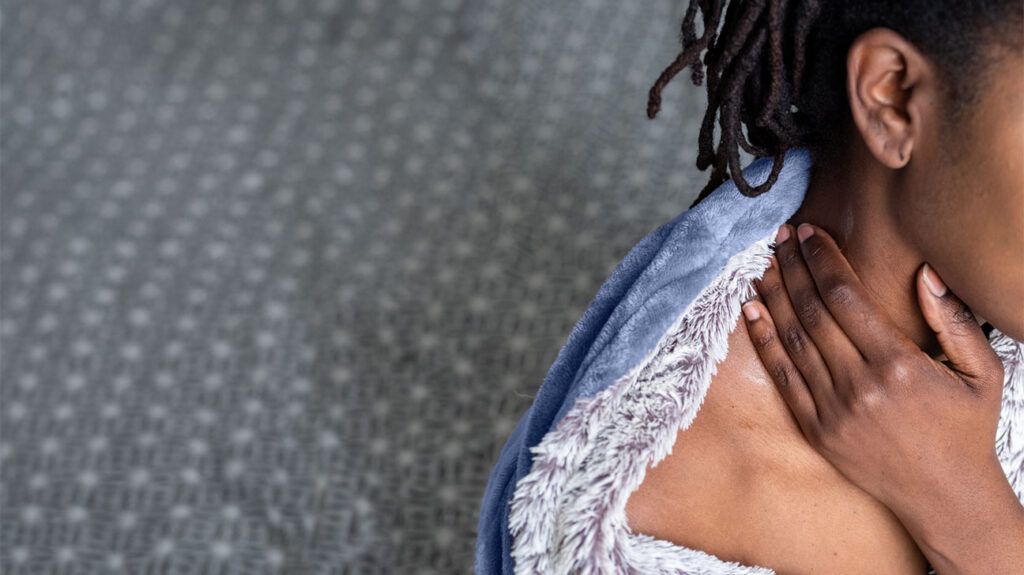Hidradenitis suppurativa (HS) and methicillin-resistant Staphylococcus aureus (MRSA) are both conditions that affect the skin. Yet an examination of HS versus MRSA shows that the causes, symptoms, and treatment are quite different.
The cause of HS is unknown, while the cause of MRSA is an antibiotic-resistant infection. HS tends to manifest in parts of the skin that rub together, but MRSA can affect any part of the skin. MRSA can be more serious than HS, as it may sometimes
Although various medications and procedures that reduce inflammation and promote healing can treat HS, treatment of MRSA involves an antibiotic to eliminate the infection.
Keep reading about HS versus MRSA, including differences in causes, symptoms, and treatment.

Despite the fact that both HS and MRSA affect the skin, they are unrelated and distinct.
HS is a chronic skin condition that manifests as bumps or boils on and under the skin. It can be painful, but it
In contrast, MRSA is bacteria that are resistant to antibiotic treatment and it
Sepsis is a life threatening condition where the body’s infection-fighting process becomes atypical and leads to organ failure.
A primary distinction is that HS affects the parts of the skin that touch each other, but MRSA can involve any part of the skin.
HS
The
Symptoms include:
- hard bumps under the skin
- pus-filled bumps on the skin
- open wounds that drain and will not heal
HS lumps can be large and painful and usually affect the same place on both sides of the body. This can result in deep, serious scars. The breakouts often disappear and later may recur.
People of color
MRSA
MRSA symptoms depend on the body part that the condition affects. However,
- warm
- red
- painful
- full of pus or other drainage
- swollen
- accompanied by fever
Click here to see images of HS skin lesions.
Click here to see images of MRSA skin lesions.
The main distinguishing factor in the causes is that MRSA involves an antibiotic-resistant infection.
HS
Doctors
- genetics
- environment
- hormones
Some risk factors for HS include:
- having a family member with HS
- exposure to a trigger, such as smoking
- being overweight
MRSA
MRSA happens when S. aureus undergoes a mutation that results in resistance to an antibiotic known as methicillin. Risk factors
- prolonged or recent hospitalization
- intensive care unit admission
- invasive procedures, which are those that affect internal body tissues
- admission to a nursing home
- recent antibiotic use
- HIV infection
- open wounds
- hemodialysis, a procedure that filters the blood for someone with kidney failure
- long-term indwelling urinary catheter
- discharge with long-term central venous access, which is an indwelling device in a central vein
Learn more about the differences between MRSA and staph infections.
A key difference is that HS treatment entails an array of options to reduce inflammation and promote healing, while MRSA treatment focuses on antibiotics to attack the infection.
HS
HS treatment may involve topical medications, which a person applies directly to lesions, or systemic medications, which work throughout the body, such as a pill.
Topical options may include an antibiotic, such as clindamycin (Cleocin HCL), to treat infections and reduce pus-filled lumps. They may also entail resorcinol (Resinol), a peel that decreases inflammation and opens clogged hair follicles.
When stronger medications are necessary, the options include:
- one or a combination of antibiotics
- hormones, such as birth control pills
- acitretin (Soriatane), an oral retinoid, which is a vitamin A derivative
- metformin (Fortamet, Glucophage, Riomet), a diabetes medication that decreases inflammation
- a biologic or biosimilar, such as adalimumab (Humira), which helps the immune system stop the inflammation and pus
In-office treatments may be necessary. They include:
- corticosteroid injection into the lesion to lower inflammation
- Botulinum toxin to reduce sweating, which decreases infections
- deroofing, which entails uncovering the skin overlying a sinus tract or abscess and then letting that area heal on its own — this process takes several weeks
- laser hair removal, which aims to permanently remove hair follicles and reduce the risk of HS
- abscess incision and drainage, which quickly relieves pain
- wide excision — removal of a lesion under the skin, which is an option when medications are not effective
- laser surgery, which usually involves CO2 lasers that obliterate the skin overlying an HS lesion, which is left to heal on its own
MRSA
Oral antibiotics are the treatment for
- trimethoprim/sulfamethoxazole (Bactrim, Septra)
- clindamycin (Cleocin HCL)
- tetracyclines, such as doxycycline (Adoxa, Doryx, Monodox) or minocycline (Dynacin, Minocin, Minolira)
If the MRSA skin infection shows signs that it has become systemic, treatment involves doctors administering antibiotics intravenously, or via a vein. An example is vancomycin (Vancocin, Firvanq).
Some types of MSRA skin infections
A comparison of HS versus MRSA shows very few similarities besides the fact that they are both skin conditions that can manifest pain. While the cause of HS is unknown, the cause of MRSA is bacteria that mutate to become resistant to antibiotics.
HS breakouts appear in body parts that touch, such as the armpit and groin. In contrast, MRSA manifests in bumps anywhere on the skin and has the potential to become serious, as it can lead to pneumonia and sepsis.
Treatment options for HS include medications and procedures that decrease inflammation and encourage healing, such as hormones and deroofing. Conversely, MRSA treatment involves antibiotics.
